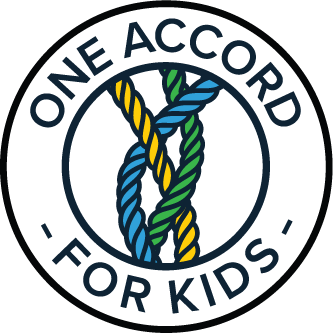By Brandon J. Logan, JD, PhD
Executive Director, One Accord for Kids
Overview:
A community-centered family support and child protection approach represents a transformative shift in child welfare, with a primary focus on the holistic well-being of children situated within families and communities. This visionary approach emphasizes local autonomy, multidisciplinary teamwork, and community involvement to ensure the success of every child. It aims to empower families, reduce restrictions, and prioritize meaningful prevention. By fostering partnerships between government agencies, the private and non-profit sectors, faith communities, and various stakeholders, the community-centered approach is poised to reshape the landscape of child welfare.
Introduction:
Child welfare systems worldwide are in dire need of a paradigm shift, one that places families and communities at the center of the equation. A community-centered approach offers a fresh perspective, emphasizing local autonomy, community collaboration, and a multidisciplinary approach to guarantee the success of every child, regardless of the path they take—be it family conservation, adoption, or alternative support systems.
- Local Autonomy and Multidisciplinary Teams:
The community-centered approach champions local autonomy, providing communities with the authority to design and manage their own child-serving systems. Multidisciplinary teams bring together experts from various fields, ensuring a comprehensive approach to child well-being, encompassing not only physical and mental health but also education and life-building skills for a brighter future.
- Empowering Families and Relatives:
Empowering families and relatives is at the heart of our mission. We strive to reduce the reliance on foster care and promote family conservation, restoration, or alternative forms of support, all grounded in the principles of faith communities and other community groups.
- Community Engagement:
Our approach places an emphasis on genuine community engagement. For example, we encourage churches and community groups to rally around families when a child is reunified, strengthening the child’s support network and creating a sense of belonging within the community.
- Technology and Data-Driven Approach:
The utilization of automated closed-loop referral systems is integral to our approach, streamlining processes and reducing crises. These systems connect faith and community providers promptly while respecting client privacy and dignity. Technology plays a vital role, enabling mobility and enhancing the effectiveness of case management.
- Public-Private Partnerships:
We advocate for partnerships with the private and non-profit sectors, engaging faith communities at the grassroots level. Community-level marketing plans are developed to recruit staff, caregivers, foster parents, kin, and mentors. Government intervention is minimal, replaced by voluntary partnerships that build community capacity, drawing from Social-Ecological and Community Asset-Based Models.
- Youth and Adult Vocational Mentors:
Our approach includes a system of youth and adult vocational mentors who provide enduring support to children and families, guiding them towards self-sufficiency and a brighter future.
- Collaboration with Managed Care Organizations (MCOs):
We seek transformative relationships with MCOs and the health network, extending beyond medical care to address social and emotional needs, fostering comprehensive care for children and families.
- Implementing Best Practices:
We explore successful child and family wellbeing practices from all sectors and sources, adapting and implementing them to enhance our outcomes.
- Relationship with the Courts:
Our vision includes an entirely different relationship with the courts, focusing on human dignity, family autonomy, and an individualized, strengths-based approach to sustainable change.
- Continuous Quality Improvement:
The implementation of an automated Continuous Quality Improvement (CQI) process ensures that the local system adapts and evolves in response to real-time data. Data democratization leads to organic accountability and fosters innovation throughout the community continuum.
- Contracts and Workforce Changes:
We imagine contract structures at the local service provision and state MCO levels to incorporate outcome-based Key Performance Indicators (KPIs) and value-based arrangements. Additionally, state workforce changes reflect a transition towards performance-based contract management and quality review.
- Involvement of Local Workforce Boards:
Local workforce boards play a pivotal role in innovative ways to support youth and families, helping build their capacity and offer a wider array of services.
Conclusion:
A community-centered family support and child protection approach introduces a visionary framework that prioritizes child well-being, family empowerment, and community engagement. By focusing on empowerment, prevention, and community support, this approach seeks to ensure the success of every child, regardless of their circumstances. It calls for collaboration between government agencies, the private and non-profit sectors, faith communities, and other stakeholders to redefine child welfare for the future, ultimately benefiting our most vulnerable children.

